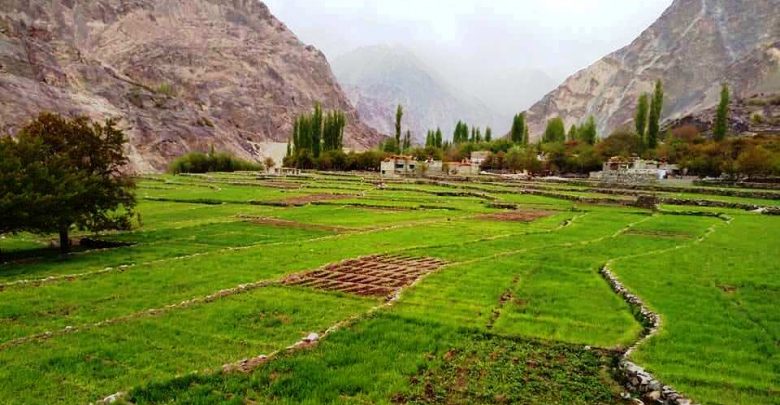Energy and Water Resources of Gilgit Baltistan

Gilgit Baltistan has many dam projects underway. The Diamer Bhasha project and the Bunji dam are significant amongst these. The territory of GB lies at the confluence of the mountain ranges of the Karakorum, Hindu Kush and the Himalayas. It consists of glaciers and snow deposits of around 27 percent. Let’s discuss the Energy and Water Resources of Gilgit Baltistan.
The Indus River and its tributaries such as the Gilgit, the Hunza, and the Nagar make the region rich in hydroelectric resources with the potential to generate more than 30,000 MW.
Energy and Water Resources of Gilgit Baltistan
On 18 October 2011, construction of the Diamer-Bhasha Dam on the River Indus began. Upon completion, this will be the world’s highest Roller Compacted Concrete (RCC) dam and is scheduled to produce 4,500 MW of electricity, store 8,500,000 acre-feet (10.5 km) of water for Pakistan which would then be used to irrigate and drink.
The project’s estimated cost is more than USD 11 billion, with estimated 12-year completion time. Its location in a highly seismic zone is a source of great concern to the local population, who will face all the negative consequences of the construction, while all the benefits will flow to the people living in Punjab and Sindh.
The Pakistani government has pushed the dam development as progressive and beneficial to all. The Gilgit-Baltistan (GB) people, however, are the ones who face the most immediate consequences of such a large-scale project.
The most daunting challenge conservatively estimated at $14 billion a few years ago was a lack of funds to support the construction cost. This project on River Indus as part of the Water and Power Development Authority (WAPDA) Water Vision 2025 has seen unparalleled delays since its inception due to various logistical hurdles.
It should be noted that the two dams, Diamer-Bhasha and Bunji, form part of the North Indus River Cascade in Pakistan, which involves the construction of five large water reservoirs with an estimated cost of $50 billion.
Together these dams will have the potential to generate around 40,000MW of hydroelectricity. Under the 2017 MoU signed between Pakistan and China, China’s National Energy Administration would oversee funding and financing of such projects.
However, reports emerged in November 2017 that talks between Pakistan and China on the Diamer-Bhasha hit a rough patch owing to China putting forward a precondition that it would “install, operate and maintain” the dam.
During the last few months of the Pakistan Supreme Court’s former chief justice, Saqib Nisar had initiated a social movement to collect donations to build the Diamer Bhasha dam, which saw domestic and international donations pouring in.
Premier Imran Khan had asked the people to openly donate for the dam until last September 2018. With time, however, the momentum of these donations has died down and lost the media spotlight generated by the Supreme Court’s former Cheif Justice.
It is estimated that the reservoir of Bhasha Diamar Mega Dam, located in Diamar, would submerge 110 kilometers from the Karakoram Highway and initially displace roughly 80,000 people.
Following the further expansion of this dam, some 300,000 local indigenous people will be displaced and about 200 KM of the area will be submerged up to Gilgit town. In Skardu Pakistan also built a mega-dam. Skardu Dam, which began in April 2003, is projected to generate 17.6 MW of power with a depth of 650 feet.
Local journalists and activists oppose this dam because of its faulty design and material use which could result in a burst affecting Skardu Valley residents. Pakistan is also constructing a 3rd Dam on the river Indus in Bunji.
It is anticipated that our environment, wildlife, semi- and precious stones will suffer a great loss worth billions. Construction of these dams is expected to result in an indigenous population displacement of 80,000 in Diamar Bhasha Dam, and 30,000 in Bunji Dam.
However, the PTI government has declared that it will provide GB with the status of an interim province; it still awaits a full province status. The caveat is that while the Prime Minister has stated that the royalty will go to the provinces of all dams.
It must be made clear that although the Prime Minister proposes that GB be granted partial provincial status, as provided for in the Constitution, only a province has the right to receive royalty, an autonomous region or partial province does not.
So if the dam were to be built hypothetically, Gilgit-Baltistan would remain deprived of any royalty.
Read also: Cultural aspects of the Balti peoples in Kargil
